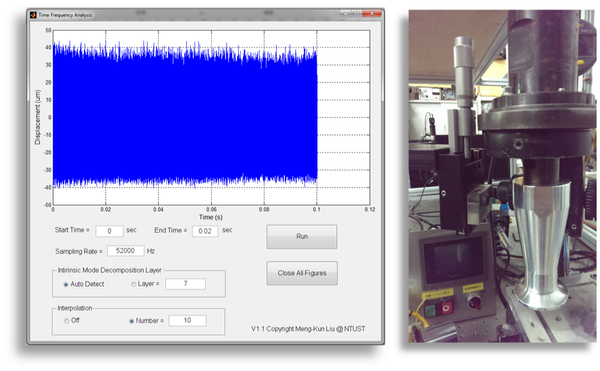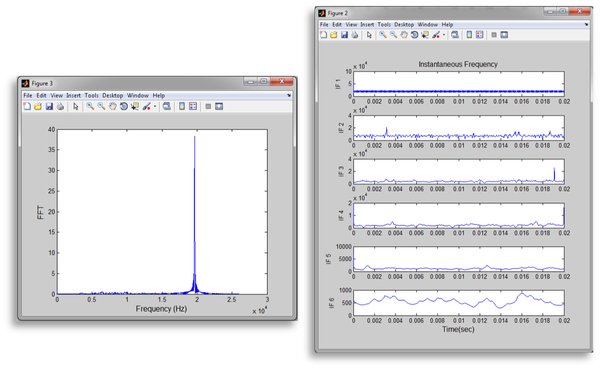Time-Frequency Signal Analysis 時頻訊號分析
Fourier-based methods of analysis misinterpret the genuine physics of nonlinear dynamics due to the employment of stationary sinusoids. They fall short in precisely identifying dynamic machining instability such as high-pitch tool chatter, the aberrational vibration between the workpiece and cutting tool when machining at high speed, henceforth causing huge losses due to premature tool failure, uneven surface finish, and low productivity. To deal with the unique characteristics of route-to-chaos, it is necessary to capture the features of time and frequency simultaneously. Hence Hilbert-Huang transform (HHT) is adopted to provide more accurate instant amplitudes and frequencies of system characteristics and nonlinearities. In this research, HHT is used to analyze the measurement from force sensor, accelerometer, optical sensor and microphone during machines process. The research road map can be seen in the following figure:

Ultrasonic Machining 超音波加工
This is an example to analyze the axial vibration of an ultrasonic mixer by the HHT program developed in our lab. The figure below shows the time response of the measurement from an optical sensor. The vibration amplitude is about 40 micron with a sampling rate of 52,000 Hz.

The left figure below shows the Fourier spectrum of the ultrasonic machining process. It only identifies the resonance frequency at 20,000 Hz but obscures the frequencies other than resonance. Due to the characteristic of Fourier transform, it is unable to investigate the frequency change at certain time instance. The figure on the right shows the instantaneous frequency obtained through Intrinsic Mode Decomposition (EMD) along with Hilbert transform. It is shown that there are six frequencies ranged from 500 Hz to 20,000 Hz and their variation with time is observed.

